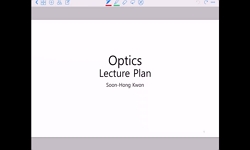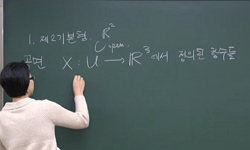This paper looks into the ‘Perspective’ and its theological implications in the context of European Christianity. Since Medieval Ages, Perspective was developed in close relationship with geometry, optics and catoptrics. During the Medieval Ages, ...
http://chineseinput.net/에서 pinyin(병음)방식으로 중국어를 변환할 수 있습니다.
변환된 중국어를 복사하여 사용하시면 됩니다.
- 中文 을 입력하시려면 zhongwen을 입력하시고 space를누르시면됩니다.
- 北京 을 입력하시려면 beijing을 입력하시고 space를 누르시면 됩니다.

원근법(Perspective)의 신학적 함의: 중세부터 바로크까지 = The Theological Implications of the ‘Perspective’ : From the Medieval to Baroque Ages
한글로보기https://www.riss.kr/link?id=A105462617
- 저자
- 발행기관
- 학술지명
- 권호사항
-
발행연도
2018
-
작성언어
Korean
-
주제어
원근법 ; 기하학 ; 영적 기하학 ; 광학 ; 반사광학 ; Perspective ; Geometry ; Spiritual Geometry ; Optics ; Catoptrics
-
KDC
231.05
-
등재정보
KCI등재
-
자료형태
학술저널
-
수록면
35-77(43쪽)
-
KCI 피인용횟수
0
- DOI식별코드
- 제공처
- 소장기관
-
0
상세조회 -
0
다운로드
부가정보
다국어 초록 (Multilingual Abstract)
This paper looks into the ‘Perspective’ and its theological implications in the context of European Christianity. Since Medieval Ages, Perspective was developed in close relationship with geometry, optics and catoptrics. During the Medieval Ages, Perspective had optic implications in principle and was developed theoretically under the influence of the Greek and Arabic geometry and optics. Many Medieval preachers developed the ‘spiritual geometry’ which connected geometry, optics and God’s and Creatures’ attributes.
During the Renaissance Ages, Perspective was applied to the art and Linear-perspective appeared in this context. During this period in which many people experienced hardships, people wanted to see the concrete and touchable God rather than abstract God. This demand was strengthened by the appearance of Copernicus’s heliocentric theory. Linear-perspective was devised by Brunelleschi and established as an art theory by Alberti. Alberti started to separate between perspective and theological implications.
During the Baroque Ages, under the influence of the Galileo’s heliocentric theory, another new world-view was appeared. In this period, there appeared tendency to connect Perspective with theological implication on the one part and separated two dimensions on the other part. Galileo’s new invention of telescope and new discovery of the Moon was influential on these tendencies. Since the Aristoteles’ world-view which believed heavenly body’s perfection and constancy was changed into adopting its imperfection and volatility.
This paper which approached Perspective historically shows the theological endeavor to understand general revelation by clarifying how people made efforts to understand God and Creature in a rational way and put this understanding into art.
다국어 초록 (Multilingual Abstract)
This paper looks into the ‘Perspective’ and its theological implications in the context of European Christianity. Since Medieval Ages, Perspective was developed in close relationship with geometry, optics and catoptrics. During the Medieval Ages, ...
This paper looks into the ‘Perspective’ and its theological implications in the context of European Christianity. Since Medieval Ages, Perspective was developed in close relationship with geometry, optics and catoptrics. During the Medieval Ages, Perspective had optic implications in principle and was developed theoretically under the influence of the Greek and Arabic geometry and optics. Many Medieval preachers developed the ‘spiritual geometry’ which connected geometry, optics and God’s and Creatures’ attributes.
During the Renaissance Ages, Perspective was applied to the art and Linear-perspective appeared in this context. During this period in which many people experienced hardships, people wanted to see the concrete and touchable God rather than abstract God. This demand was strengthened by the appearance of Copernicus’s heliocentric theory. Linear-perspective was devised by Brunelleschi and established as an art theory by Alberti. Alberti started to separate between perspective and theological implications.
During the Baroque Ages, under the influence of the Galileo’s heliocentric theory, another new world-view was appeared. In this period, there appeared tendency to connect Perspective with theological implication on the one part and separated two dimensions on the other part. Galileo’s new invention of telescope and new discovery of the Moon was influential on these tendencies. Since the Aristoteles’ world-view which believed heavenly body’s perfection and constancy was changed into adopting its imperfection and volatility.
This paper which approached Perspective historically shows the theological endeavor to understand general revelation by clarifying how people made efforts to understand God and Creature in a rational way and put this understanding into art.
목차 (Table of Contents)
- I. 들어가며
- II. 중세의 원근법
- III. 르네상스 원근법
- IV. 바로크 시대
- V. 나가며
- I. 들어가며
- II. 중세의 원근법
- III. 르네상스 원근법
- IV. 바로크 시대
- V. 나가며
- 참고문헌
- Abstract
참고문헌 (Reference)
1 알베르티, "회화론" 기파랑 2011
2 황태주, "자연법칙으로서 수와 기하학의 특성에 관한 연구: 고대 그리스와 중세건축을 중심으로" 13 (13): 109-121, 1997
3 김중효, "이탈리아 르네상스 시대의 초기 원근법 연구- 레온 바티스타 알베르티의 『델라 피투라(Della Pittura)』를 중심으로 -" 한국연극학회 (26) : 83-110, 2005
4 조은정, "유클리드 광학과 초기 선 원근법 이론의 형성" 한국미술이론학회 (18) : 7-31, 2014
5 류전희, "원근법의 변화와 고전 광학이론 - 중세에서 초기르네상스까지 -" 대한건축학회 25 (25): 167-174, 2009
6 강연희, "알하젠의 지각과 상상력에 관한 이론연구 - 『광학의 서』를 중심으로" 한국미학예술학회 46 : 45-74, 2016
7 노성두, "알베르티의 회화론" 9 : 7-24, 1997
8 조은정, "아나모르포시스와 바로크 시대 선 원근법 이론" 미술사학연구회 (35) : 247-280, 2010
9 이한진, "수학은 어떻게 예술이 되었는가: 기하학으로 본 미술과 건축" 컬처룩 2016
10 프리틀라인, 쿠르트, "서양 철학사" 서광사 1986
1 알베르티, "회화론" 기파랑 2011
2 황태주, "자연법칙으로서 수와 기하학의 특성에 관한 연구: 고대 그리스와 중세건축을 중심으로" 13 (13): 109-121, 1997
3 김중효, "이탈리아 르네상스 시대의 초기 원근법 연구- 레온 바티스타 알베르티의 『델라 피투라(Della Pittura)』를 중심으로 -" 한국연극학회 (26) : 83-110, 2005
4 조은정, "유클리드 광학과 초기 선 원근법 이론의 형성" 한국미술이론학회 (18) : 7-31, 2014
5 류전희, "원근법의 변화와 고전 광학이론 - 중세에서 초기르네상스까지 -" 대한건축학회 25 (25): 167-174, 2009
6 강연희, "알하젠의 지각과 상상력에 관한 이론연구 - 『광학의 서』를 중심으로" 한국미학예술학회 46 : 45-74, 2016
7 노성두, "알베르티의 회화론" 9 : 7-24, 1997
8 조은정, "아나모르포시스와 바로크 시대 선 원근법 이론" 미술사학연구회 (35) : 247-280, 2010
9 이한진, "수학은 어떻게 예술이 되었는가: 기하학으로 본 미술과 건축" 컬처룩 2016
10 프리틀라인, 쿠르트, "서양 철학사" 서광사 1986
11 파노프스키, 에르빈, "상징형식으로서의 원근법" 도서출판b 2014
12 마틴 캠프, "보이는 것과 보이지 않는 것: 레오나르도에서 허블 망원경까지" 을유 문화사 2010
13 김지영, "르네상스 선형 원근법의 원리 연구" 5 : 41-70, 2000
14 피어시, 낸시, "과학의 영혼" SFC출판부 2009
15 조은정, "고대 미술의 공간 재현과 선 원근법의 기원" 서양미술사학회 17 : 177-202, 2002
16 류전희, "고대 그리스 로마시기의 건축적 재현에서 자연적 원근법과 유클리드 광학" 대한건축학회 25 (25): 201-208, 2009
17 Corsi, Elisabetta, "‘Agreeable yet useful’: Notes on Jesuitical Visual Culture during the Seventeenth Century" 9-16, 2003
18 Lindberg, David C., "When Science & Christianity Meet" University of Chicago Press 2003
19 Edgerton, Samuel. Y., "The Renaissance Rediscovery of Linear Perspective" Harper & Row Publishers 1976
20 Bacon, Roger, "The Opus Majus of Roger Bacon, Vol. I" University of Pennsylvania Press 1962
21 Edgerton, Samuel. Y., "The Mirror, the Window and the Telescope: How Renaissance Linear Perspective Changed Our Vision of the Universe" Cornell University Press 2009
22 Manetti, Antonio, "The Life of Brunelleschi" Pennsylvania State University Press 1970
23 O'Malley, John W., "The Jesuits and the Arts 1540-1773" Saint Joseph’s University Press 2005
24 Field, J. V., "The Invention of Infinity : Mathematics and Art in the Renaissance" Oxford University Press 1997
25 Kemp, Martin, "Seen/Unseen: Art Science & Intuition from Leonardo to the Hubble Telescope" Oxford University Press 2006
26 Antonine, Saint, "Sancti Antonini Summa Theologia 4 vols" Akademische Druck u. Verlagsanstalt 1959
27 Lindberg, David C., "Roger Bacon and the Origins of Perspectiva in the Middle Ages: A Critical Edition and English Translation of Bacon’s Perspectiva with Introduction and Notes" Oxford University Press 2006
28 Belting, Hans, "Perspective: Arab Mathematics and Renaissance Western Art" 16 (16): 183-190, 2008
29 Pozzo, Andrea, "Perspective in Architecture and Painting: An Unabridged Reprint of the Englishand-Latin Edition of the 1693 “Persepctiva Pictorum et Architectorum" Dover Publications 1989
30 Doesschate, G. T., "Oxford and the Revival of Optics in the Thirteenth Century" 1 : 313-342, 1962
31 Alberti, Leon Battista, "On Painting: A New Translation and Critical Edition" Cambridge University Press 2011
32 Field, J. V., "Mathematics from Manuscripts to Print, 1300-1600" Oxford University Press 237-246, 1988
33 Chen, Hui-Hung, "Chinese Perception of European Perspective: A Jesuit Case in the Seventeenth Century" 24 (24): 97-128, 2009
34 Edgerton, Samuel. Y., "Brunelleschi’s Mirror, Alberti’s Window, and Galileo’s Perspective Tube" 13 : 151-179, 2006
35 Musillo, Marco, "Bridging Europe and China: The Professional Life of Giuseppe Castiglione (1688-1766)" University of East Anglia 2006
36 Schechner, Sara, "Between Knowing and Doing: Mirrors and their Imperfections in the Renaissance" 10 : 137-162, 2005
37 Vesley, Dalibor, "Architecture in the Age of Divided Representation" MIT Press 2004
38 Perez-Gomez, A., "Architectural Representation and the Perspective Hinge" MIT Press 1997
39 허민준, "4학(quadrivium) 교재의 형성과정: –보에티우스를 중심으로" 한국서양고대역사문화학회 (45) : 223-248, 2016
40 류전희, "15-16세기 초 원근법의 전개과정 - 레오나르도 다빈치의 광학 및 원근법 연구를 중심으로-" 대한건축학회 27 (27): 115-122, 2011
동일학술지(권/호) 다른 논문
-
- 연세대학교 신과대학(연합신학대학원)
- 최두현(Doo Hyun Choi)
- 2018
- KCI등재
-
- 연세대학교 신과대학(연합신학대학원)
- 김동주(Dong-joo Kim)
- 2018
- KCI등재
-
- 연세대학교 신과대학(연합신학대학원)
- 박욱주(Wook Joo Park)
- 2018
- KCI등재
-
인간/기계의 공생의 기호학: 클라크(A. Clark)의 ‘연장된 정신’(the Extended Mind) 이론에 대한 비판적 성찰
- 연세대학교 신과대학(연합신학대학원)
- 박일준(Iljoon Park)
- 2018
- KCI등재
분석정보
인용정보 인용지수 설명보기
학술지 이력
| 연월일 | 이력구분 | 이력상세 | 등재구분 |
|---|---|---|---|
| 2022 | 평가예정 | 재인증평가 신청대상 (재인증) | |
| 2019-01-01 | 평가 | 등재학술지 유지 (계속평가) |  |
| 2016-01-01 | 평가 | 등재학술지 유지 (계속평가) |  |
| 2012-01-01 | 평가 | 등재학술지 선정 (등재후보2차) |  |
| 2011-01-01 | 평가 | 등재후보 1차 PASS (등재후보1차) |  |
| 2009-01-01 | 평가 | 등재후보학술지 선정 (신규평가) |  |
학술지 인용정보
| 기준연도 | WOS-KCI 통합IF(2년) | KCIF(2년) | KCIF(3년) |
|---|---|---|---|
| 2016 | 0.34 | 0.34 | 0.38 |
| KCIF(4년) | KCIF(5년) | 중심성지수(3년) | 즉시성지수 |
| 0.36 | 0.33 | 0.816 | 0.11 |





 DBpia
DBpia







